The Marsh Punt is a humble gem that may not grab you right away, but will quietly grow on you. Designed and built by Tad Lyford, the compact craft has a 13’6″ LOA and a 42″ beam; she weighs about 100 lbs and draws 12″. Like a miniature island in tranquil waters, she provides respite that is quieting to the spirit. Tad and his wife, Ellen, row and pole their punt, exploring peaceful marshlands and other calm waterways that are plentiful in southern Maine and other parts of New England.
When the Marsh Punt appeared in WoodenBoat magazine’s Launchings (see WB No. 213), she drew throngs of admirers. Her simple lines portending an uncomplicated build, thoughtfully placed sparse interior components, and plain finish of linseed oil and paint all come together in a package that is as refreshing as a cool breeze on a hot day.
Tad has been fascinated with punts since childhood. Growing up in Maine and playing on and exploring in small boats led him to create this comely punt, which represents an amalgam of his favorite designs and building techniques.
He holds many designers and builders in high regard, but three who stand out are Reuel Parker, John Gardner, and Hannu Vartiala. Taking Parker’s lead from The Sharpie Book, Tad used plywood and kept the building process as simple as possible. He took cues from John Gardner’s comments on the 18′ Light Bateau that appears in The Dory Book as he developed proportions for rowing. He also found inspiration from Hannu Vartiala’s website, Hannu’s Boatyard, which offers creative approaches to utilizing plywood to make the best use of every last scrap. These concepts, which are central to the boat’s design and construction, coincide with Tad’s desire to build a strong, stable, and enjoyable boat and to do it as frugally and as efficiently as possible.
Even an inexperienced builder will not find this project too difficult to take on. Over a simple ladderback and central mold, Tad bent on white pine chine logs and then attached the boat’s bottom to the chines. He used meranti plywood for the bottom and side planks and secured these components in place with stainless-steel screws. Since there is barely any twist to the single plank that makes up each of the boat’s sides, it can be built without spiling (measuring a complex plank’s shape) or steaming.
The boat’s rocker (the lengthwise sweep along its bottom) is slight—but even a small amount of rocker can create difficulty when bending on the meranti bottom. Meranti is tough but unforgiving under bending pressure.
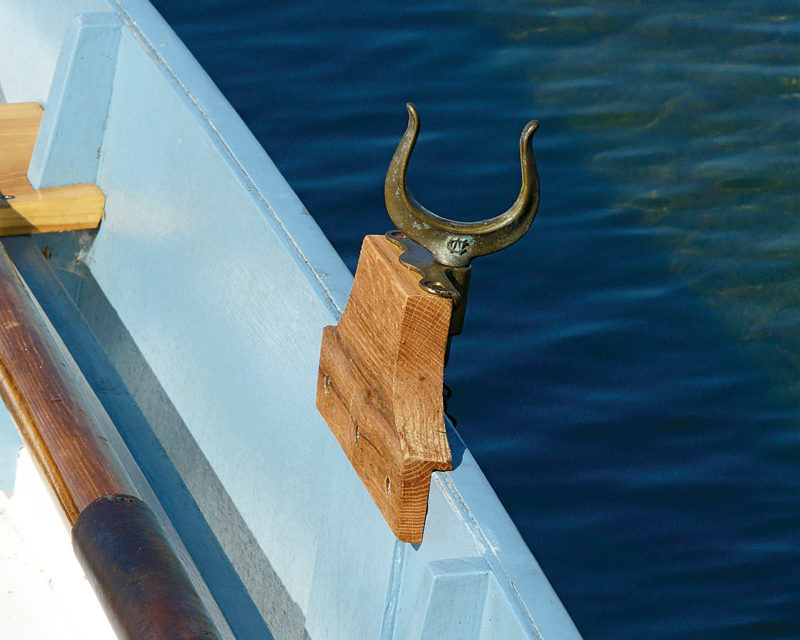
Marsh Punt’s low sides require an elevated oarlock pad, in order to keep the oar handles out of the rower’s lap.
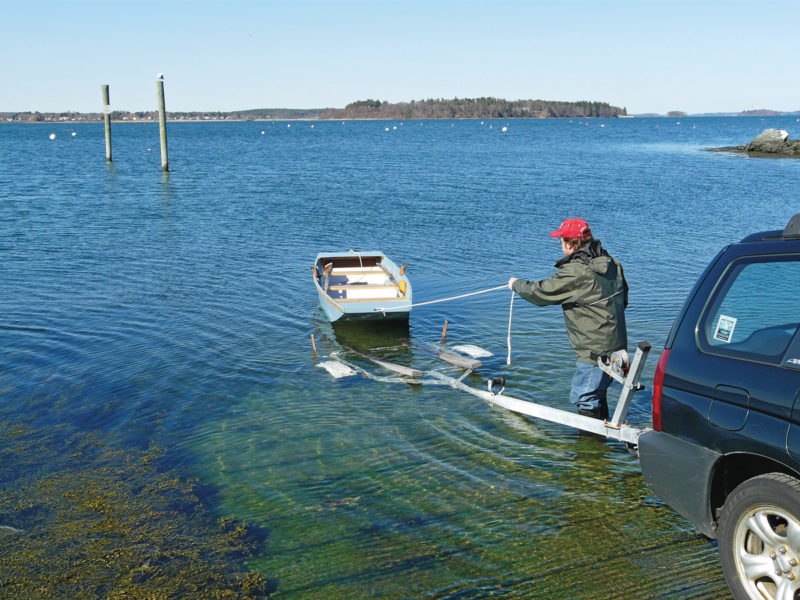
The boat’s flat bottom and light weight make launching and recovery easy.
With the bottom and side pieces screwed in place, Tad fortified the seams along the bottom, chines, and sides with fiberglass tape and epoxy. Then he added the boat’s two white oak transoms. Once the hull had taken shape, he removed it from the ladderback and coated it with epoxy inside and out. Then he fitted it out with white oak frames, deck framing, and rubrails, and built and installed meranti decks (fore and aft) and white pine risers and thwarts.
With the boat nearly finished, Tad attached a white oak strip down the centerline of the boat’s bottom. This tiny strip (3/4″ thick × 2″ wide) that runs the full length of the bottom may seem insignificant, but it gives the boat remarkable tracking ability underway. It also acts as a skid strip, which protects the bottom when the boat is dragged.
“The Marsh Punt is pleasant to row or to pole and is comfortable for reading, picnicking, or stretching out for a mid-afternoon nap.”
Marsh Punt’s overhanging ends and short decks ease the task of stepping aboard from the shore: The boat can be nosed right up onto the beach, and a passenger can make the short step onto the deck, with dry feet the whole while.
When it came time to install the oarlock pads, Tad found himself in a dilemma. He had already designed the boat with thwarts placed a mere 3½” down from the sheer. This is desirable because it prevents the rower from feeling like he is seated too low in the boat. Tad remarked, “I didn’t want to feel like I was sitting in an open kayak.” That being the case, he found that the combination of traditional oarlock pads and his chosen thwart height caused his oars to land too low in his lap for pleasant maneuvering. His solution was to create tall, scalloped oarlock pads made from white oak. These handsome oarlocks are fine for Tad’s purposes.
However, if I were to build this boat, I would beef up these oarlock pads, adding about 3 ⁄8″ in thickness to better accommodate the inboard step where they attach to the plank. I would probably also forgo the white oak and instead build them in plywood and then paint them. Because these oarlock pads are designed to take the vast majority of the strain with little reliance on the rail to share the load, anything but the quietest rowing on calm waters could snap these oarlock pads along a grain line, especially between the oarlock location and the sheer, where the wood is not supported. White oak is strong but in this application it is only as strong as its weakest grain line between the oarlock and the sheer. Plywood, with its multi-directional strength, would be a better choice for the pads—even though I concede that they wouldn’t be as pretty. One could also laminate some hardwood pieces to create the needed strength and still come close to the nice look that Tad has achieved.
Throughout the design process, Tad kept Ellen’s enjoyment in mind. This leads me to one of my favorite features: the step-aboard decks at each end. There was a hard chill in the water the day I visited Tad, and when it came time to board the boat, I realized that I had forgotten my rubber boots. Not to worry—Tad brought the boat right up to the water’s edge. The deck overhung the shoreline, enabling me to step aboard without dampening a toe. The Queen of Sheba never had it better.
A boat that must be trailered to and from the water may be left in a driveway for weeks at a time between outings. Since trailering is Tad’s only option, plywood was a good construction choice for his hull because plywood doesn’t shrink and swell like solid wood. But the Marsh Punt boat could be built in solid woods, and that would be a fine choice too, especially if the boat were kept in the water or on tidal mudflats all season long.
The Marsh Punt is pleasant to row or to pole and is comfortable for reading, picnicking, or stretching out for a mid-afternoon nap. Like love that comes on softly, the Marsh Punt will be a pleasure to build, and she’ll give her owner great pride in stewardship over the years.![]()
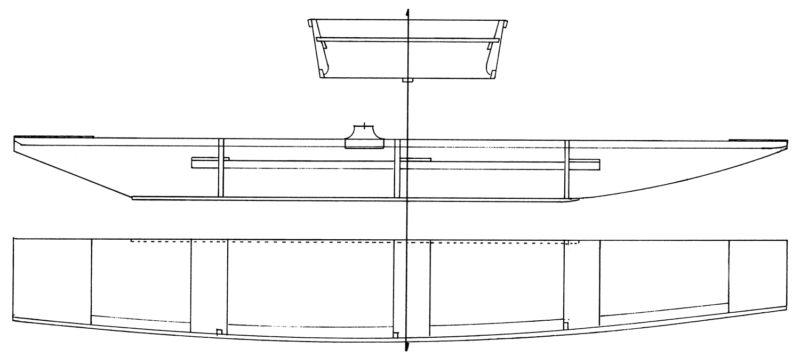
Marsh Punt’s overhanging ends and short decks ease the task of stepping aboard from the shore: The boat can be nosed right up onto the beach, and a passenger can make the short step onto the deck, with dry feet the whole while.
The Sharpie Book, by Reuel Parker, and The Dory Book, by John Gardner, are available at The WoodenBoat Store.
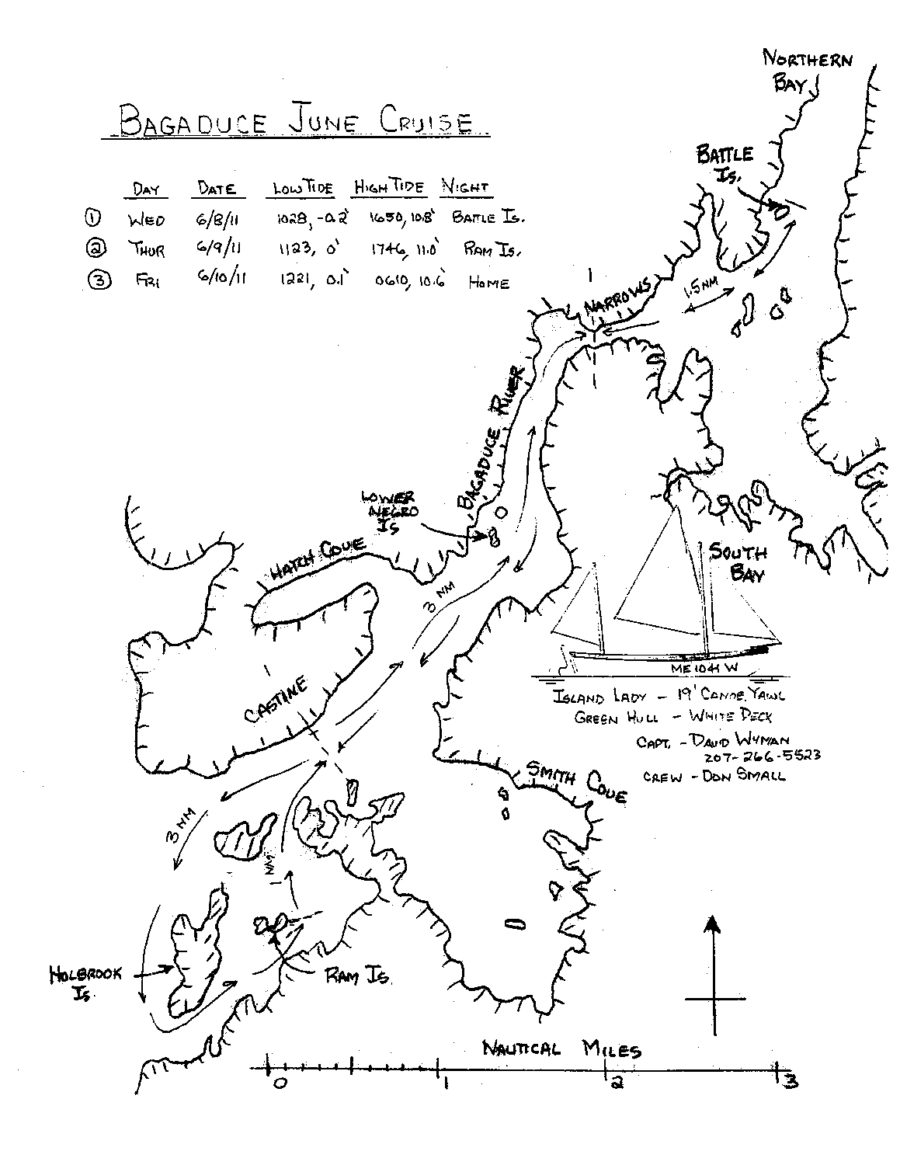
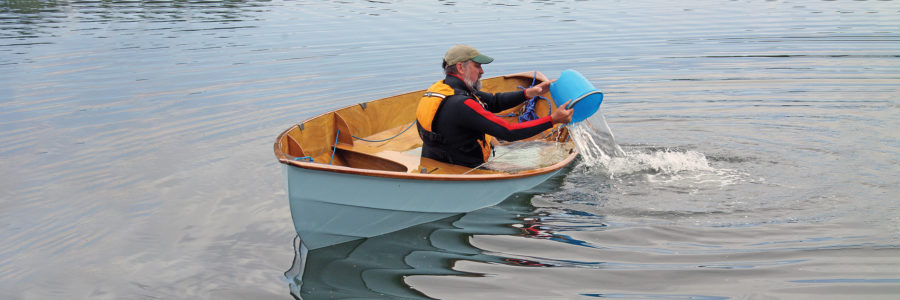
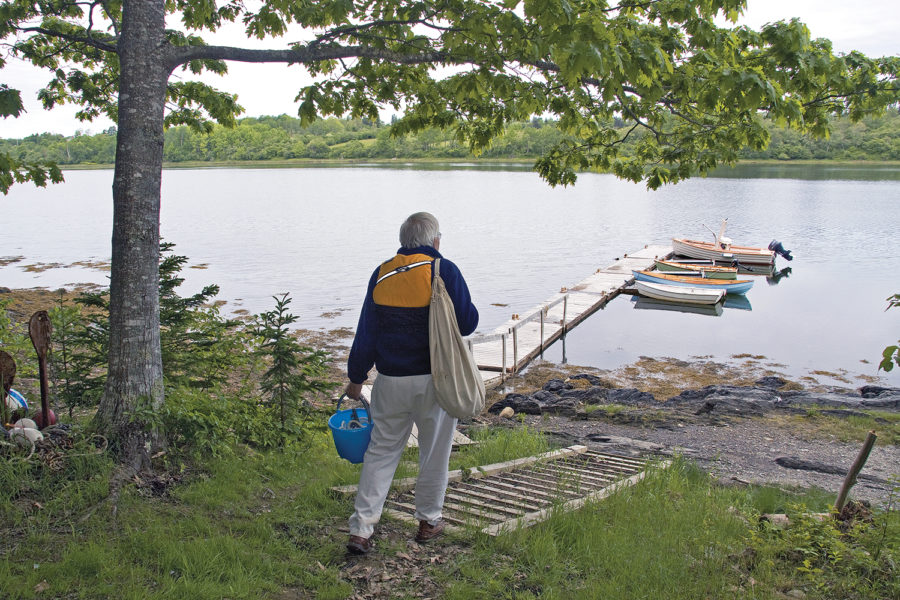
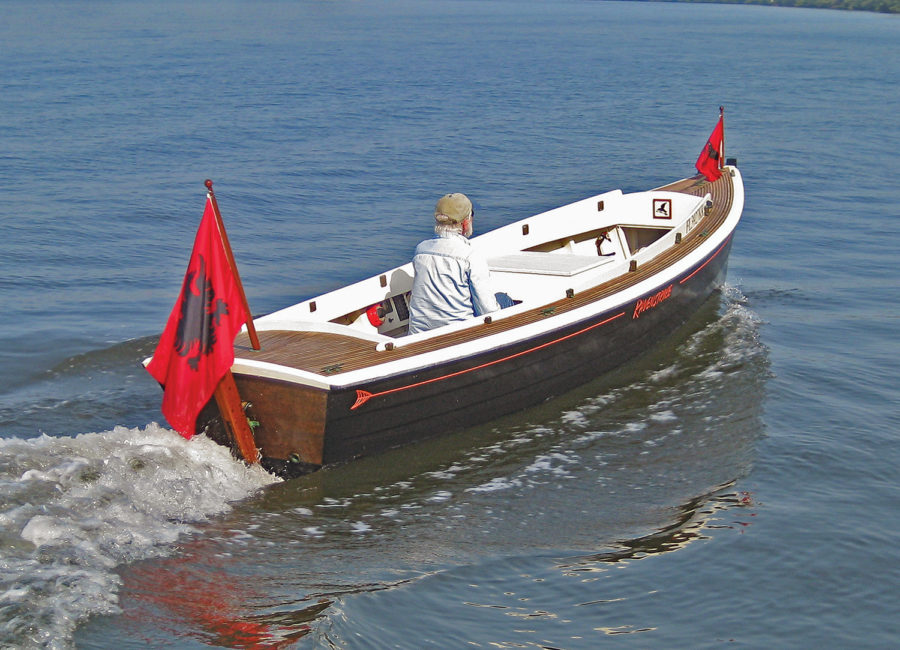
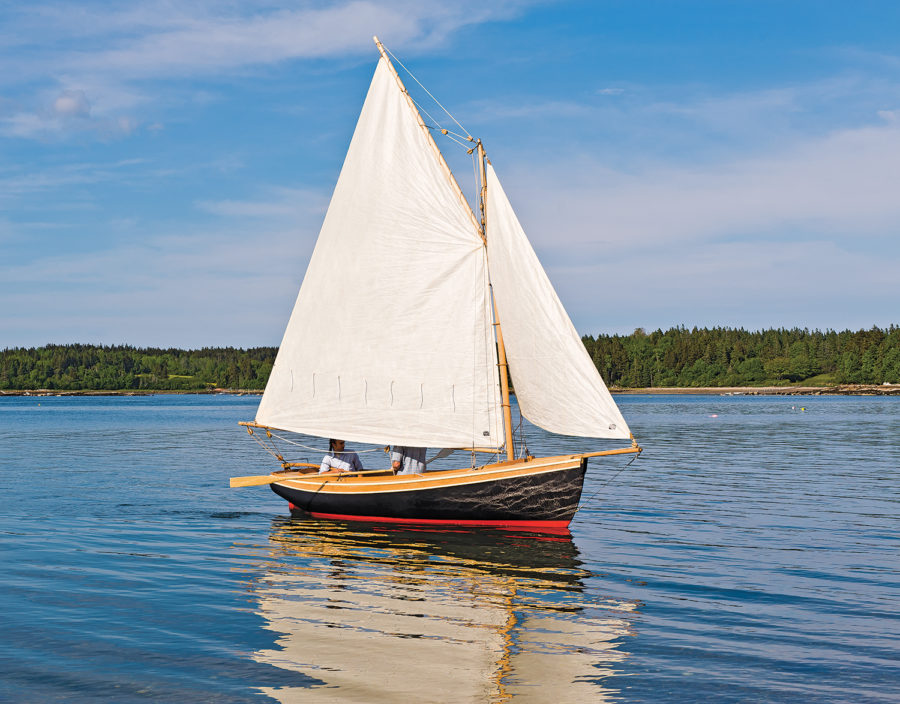
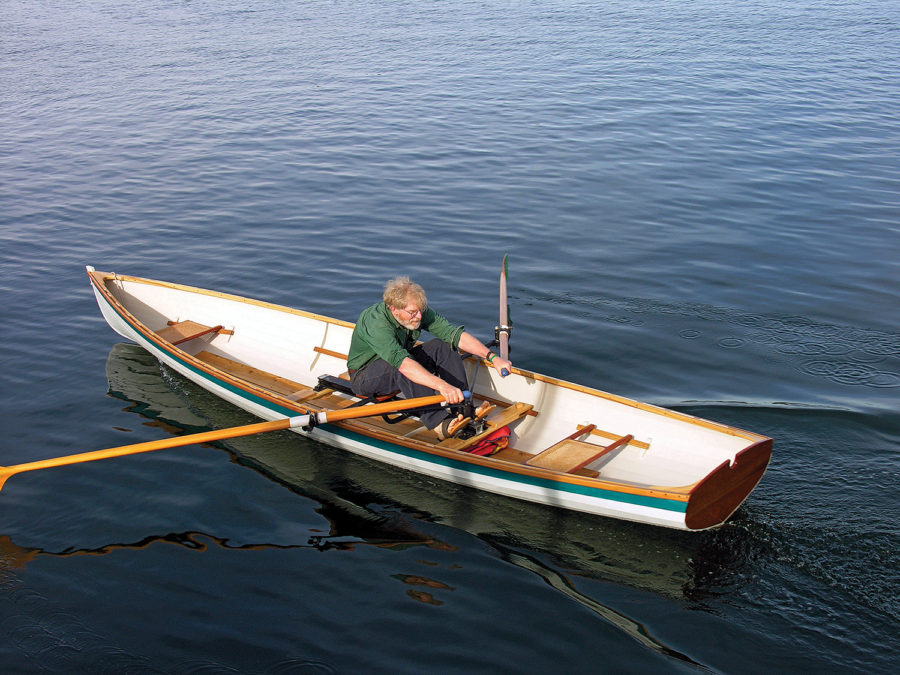
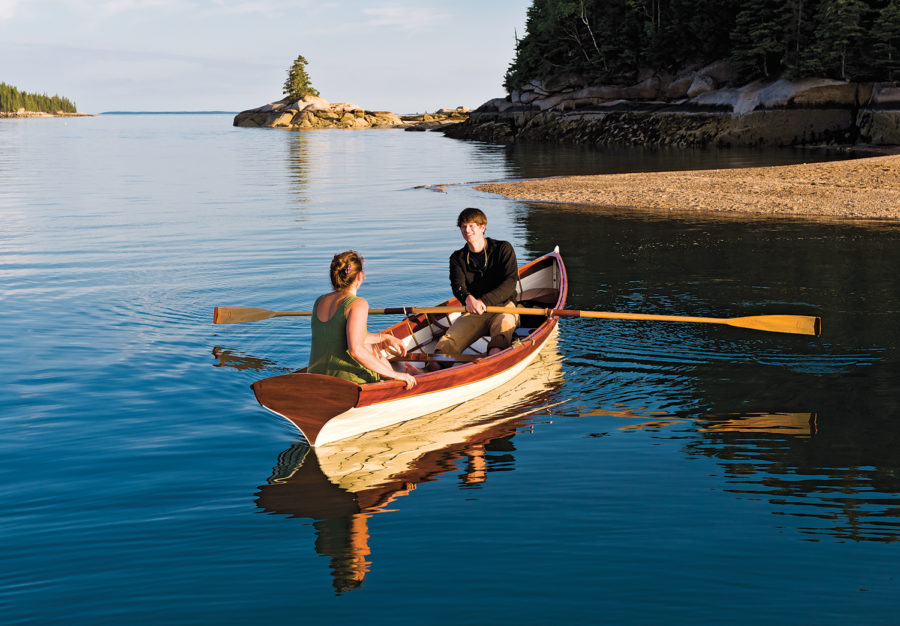
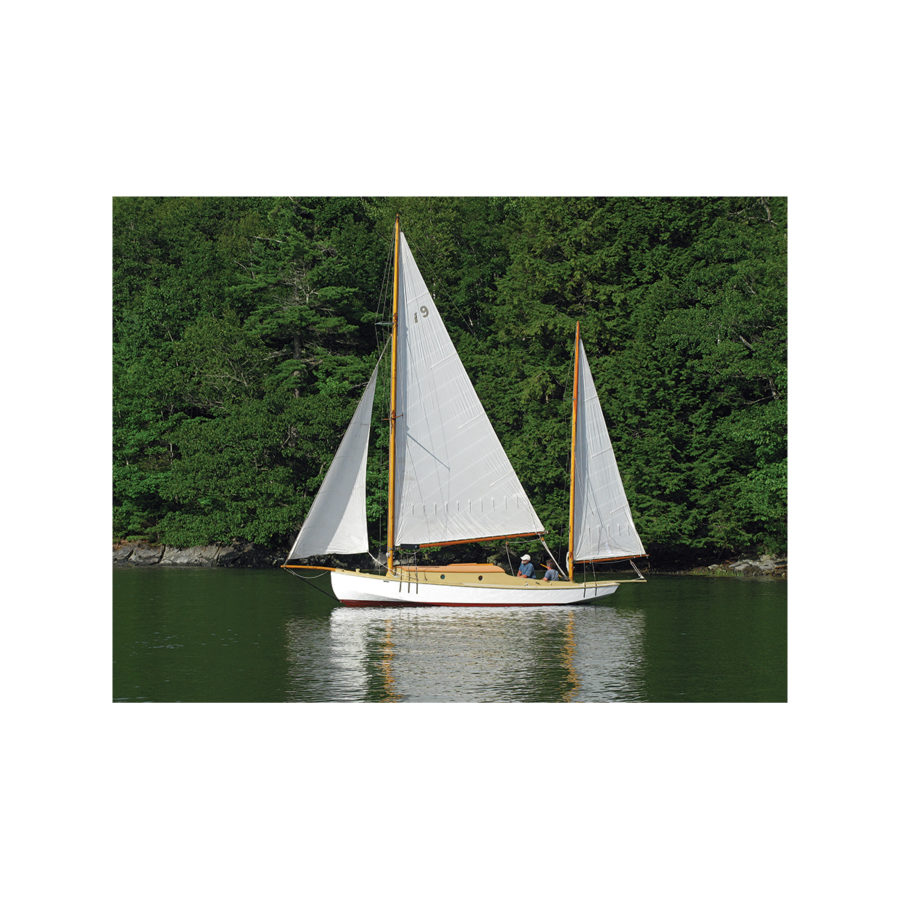
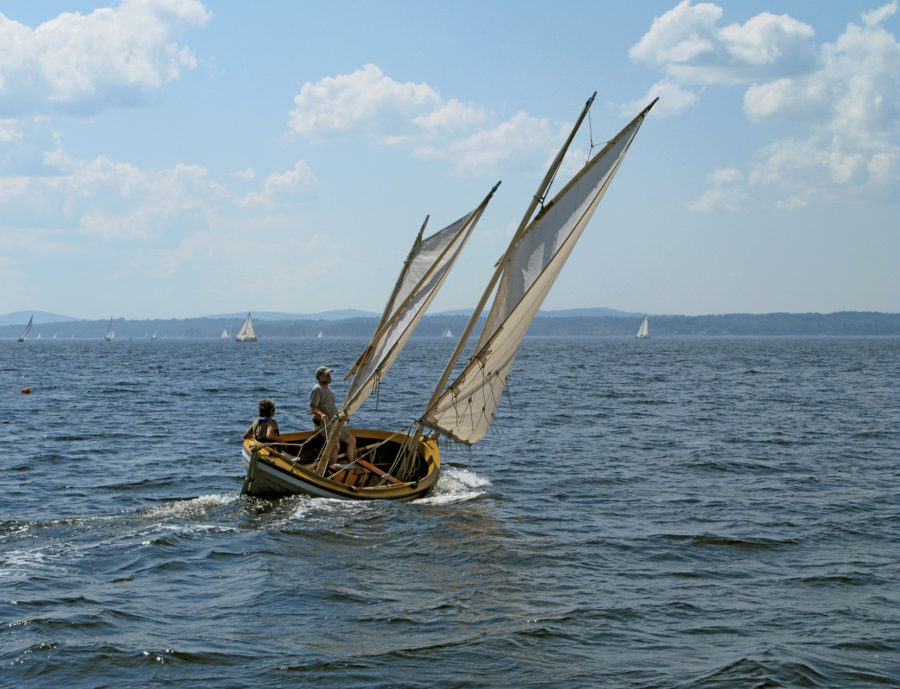
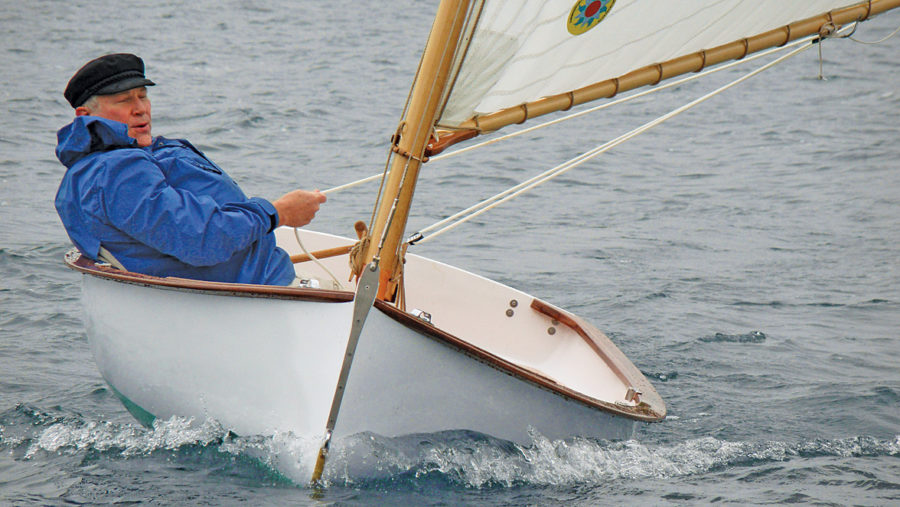
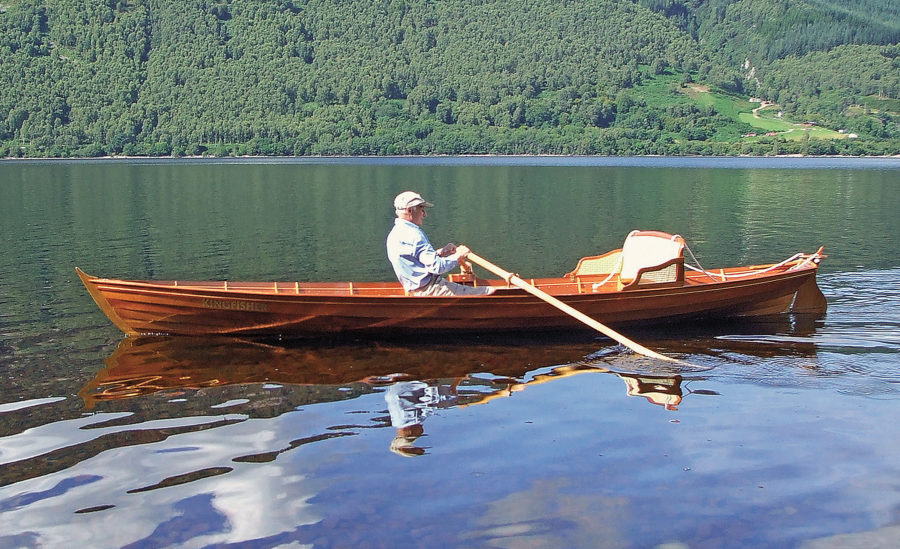
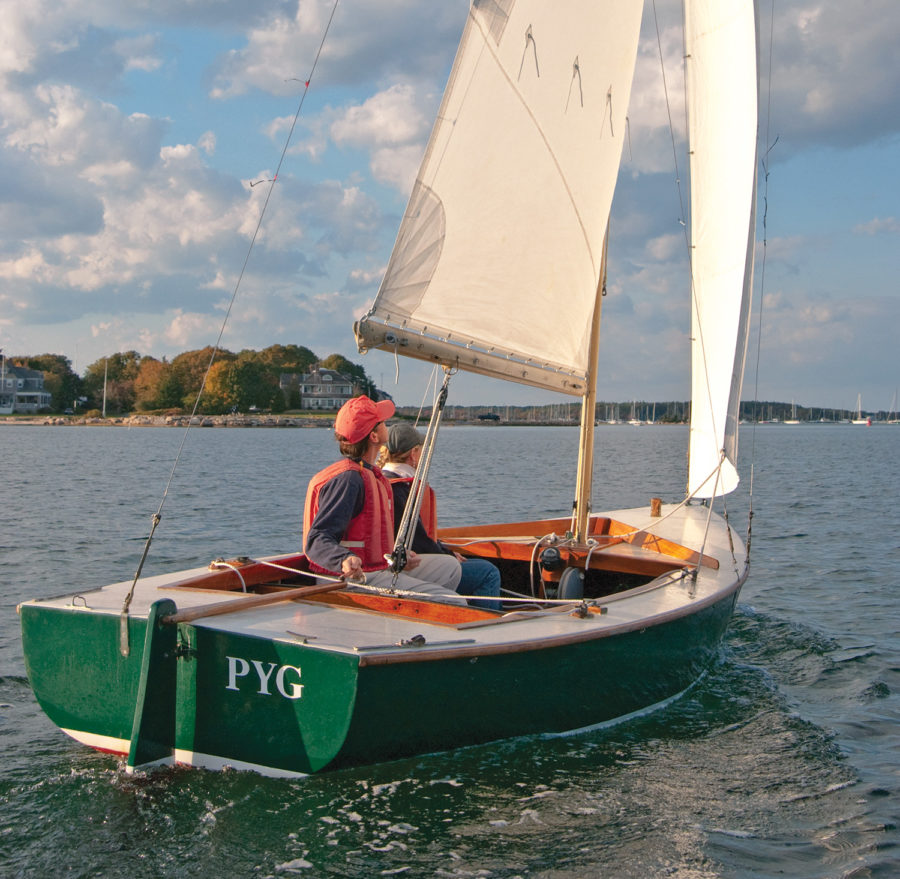
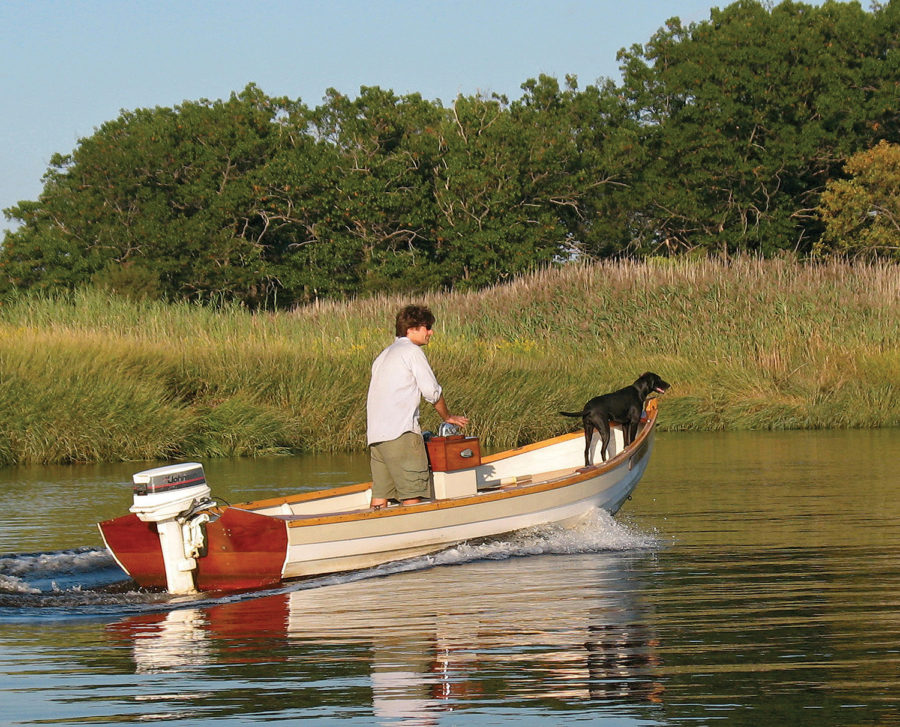
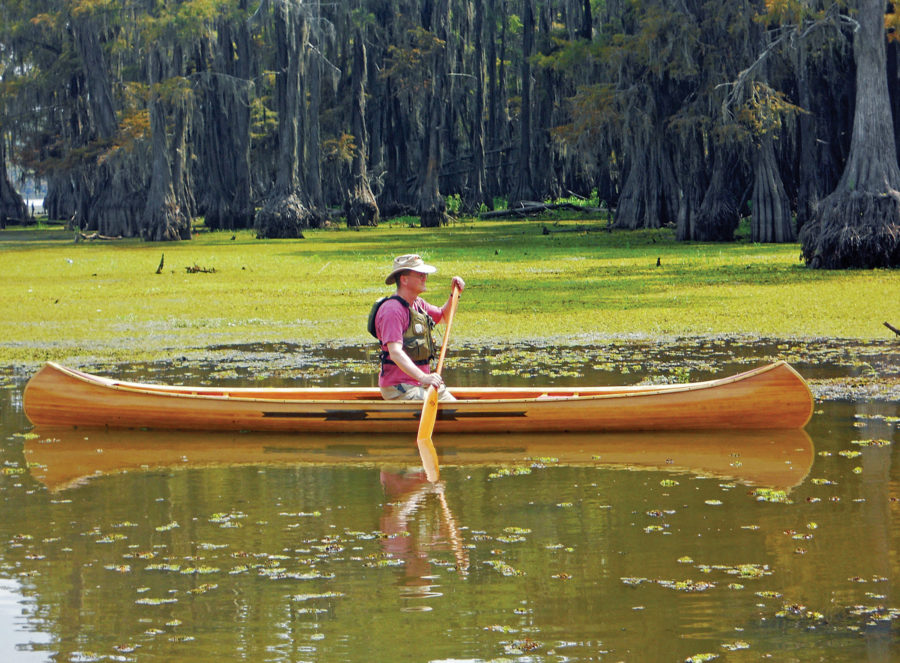
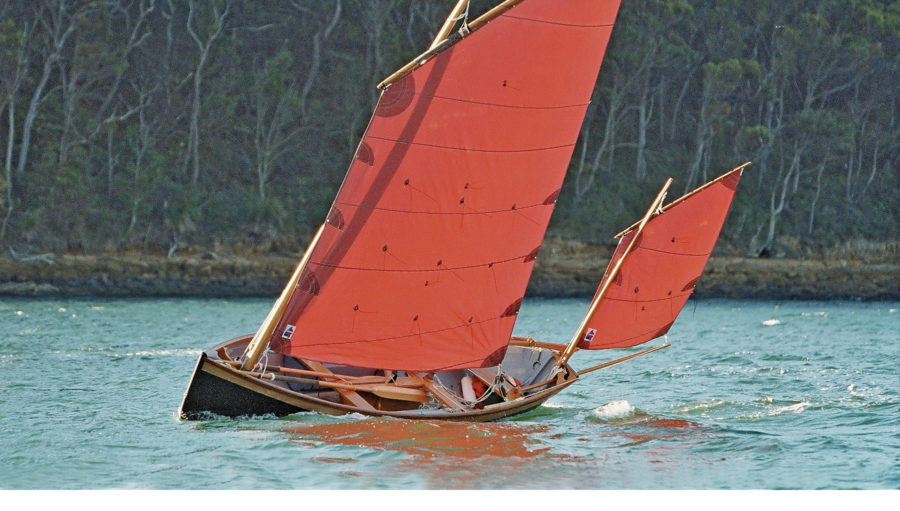
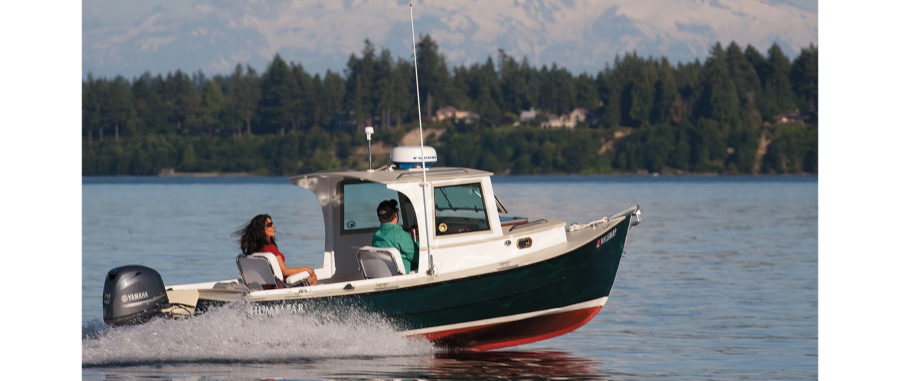
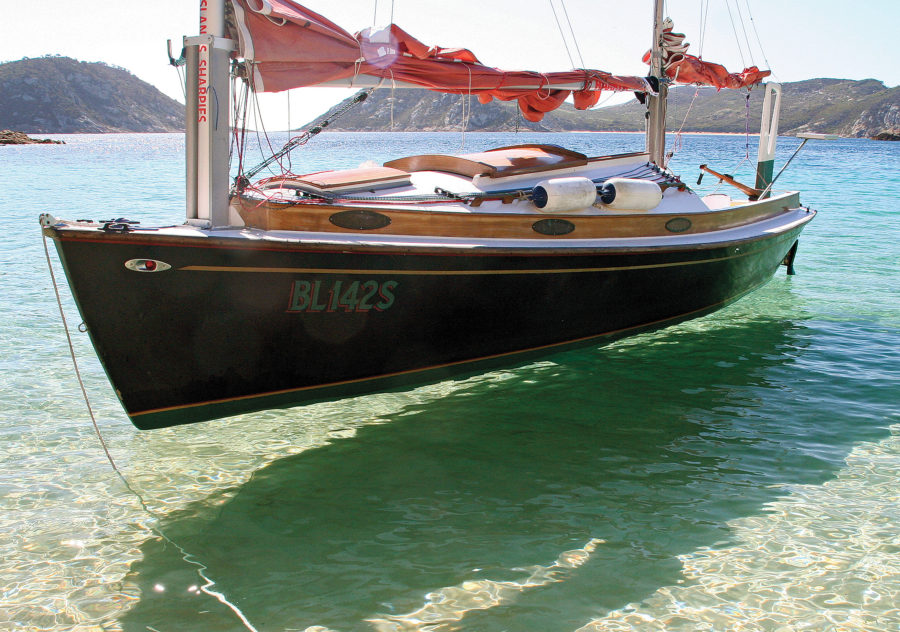
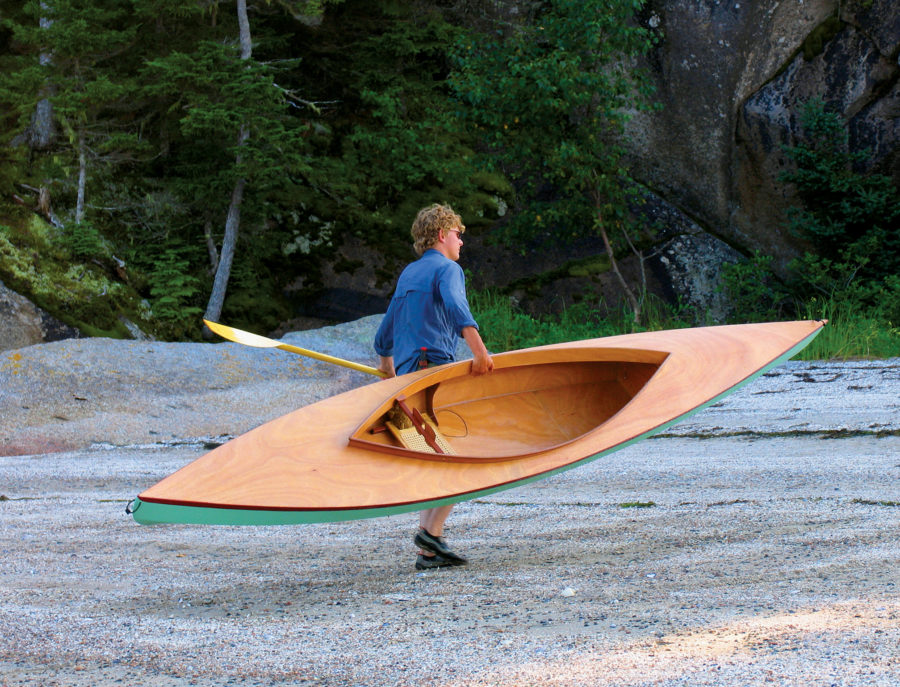
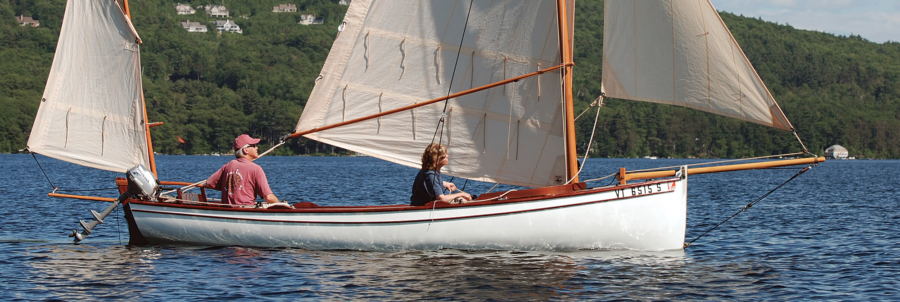
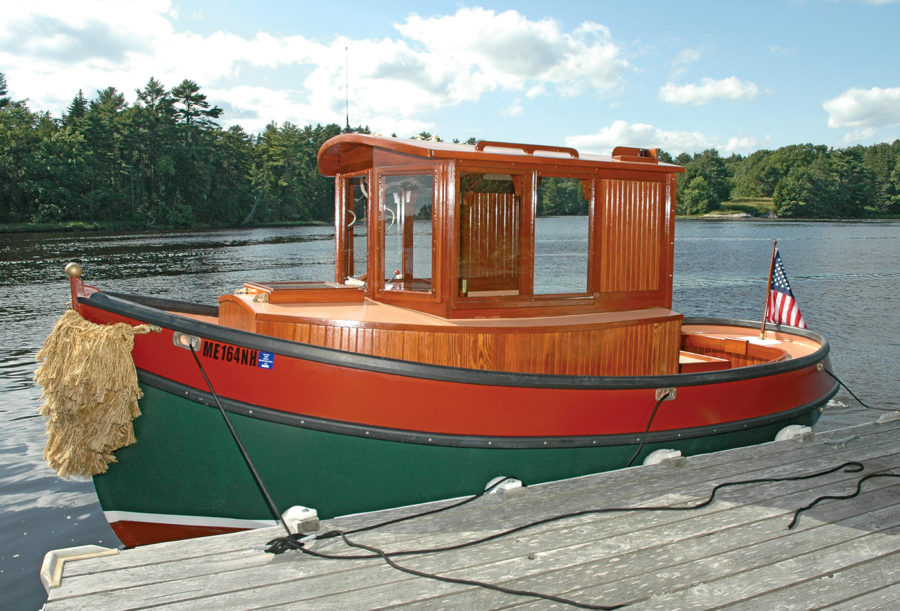
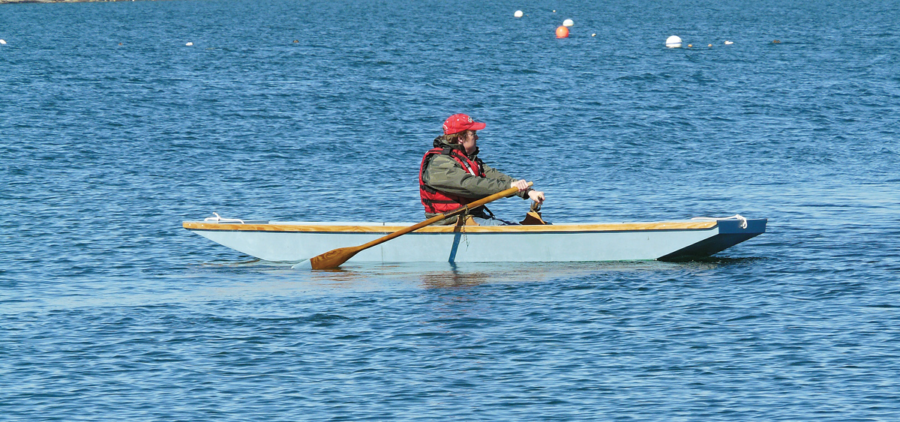
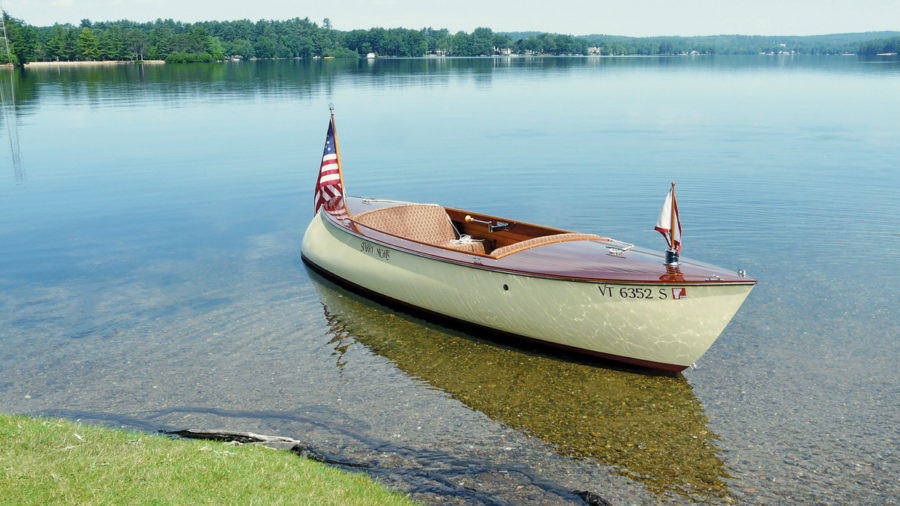
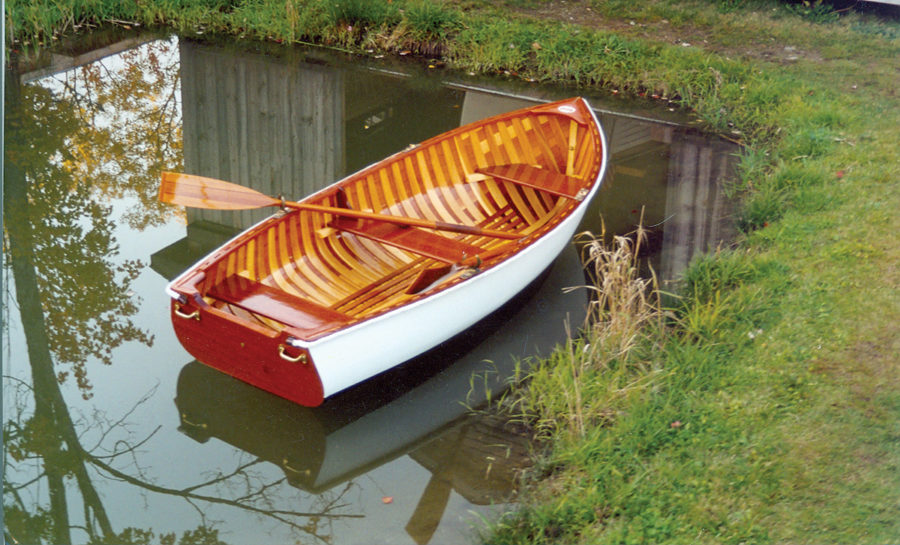
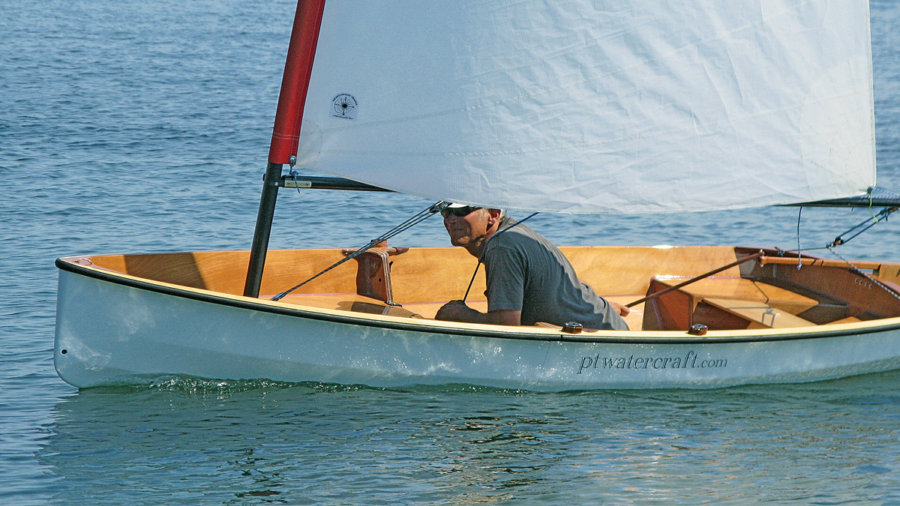
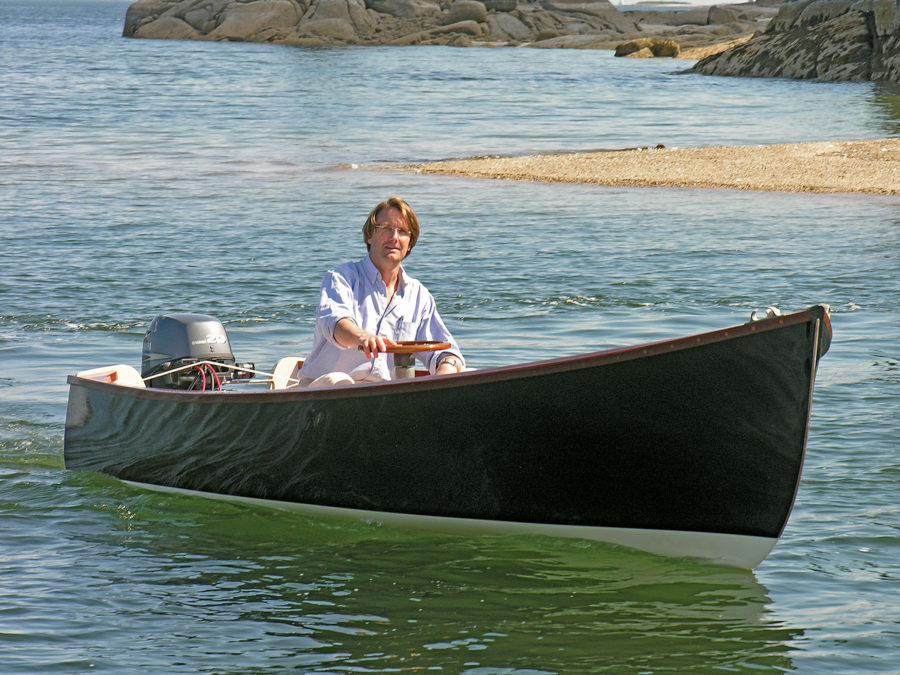
Can you share any information on the height of the sides? Looks like a perfect boat for protected waters!